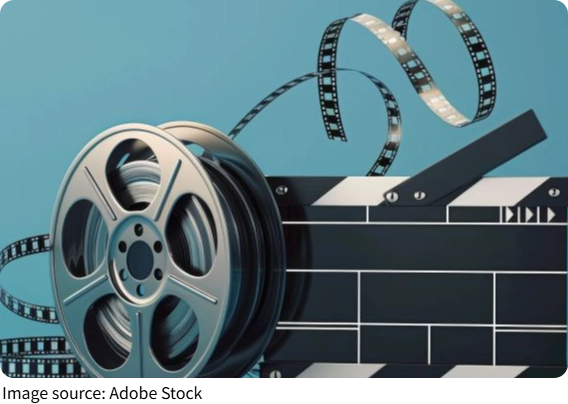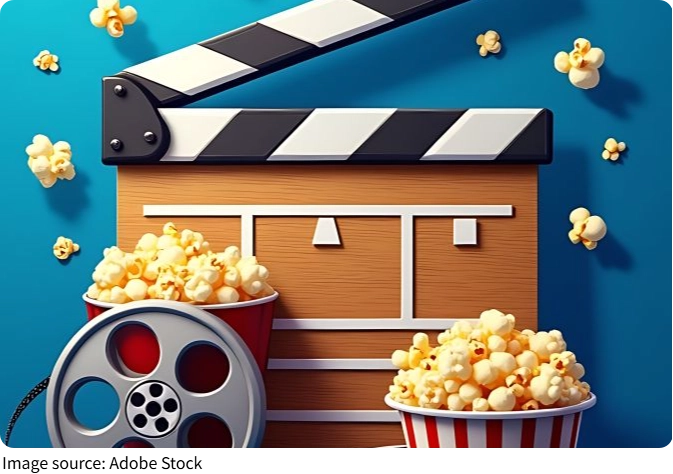Movie Film Magic

Have you ever watched an old movie and thought, "Wow, that just feels different?" That feeling often comes from the magic of movie film, a medium that once ruled the world of cinema.
Even today, in the age of high-resolution digital cameras, movie film hasn’t disappeared. In fact, it's making a comeback in some pretty exciting ways.
Let's explore together why this classic format still holds a special place in the hearts of filmmakers and audiences.
What Is Movie Film?
Movie film is a physical material made up of a clear plastic base coated with light-sensitive chemicals. When light passes through a camera lens, it hits the film and creates an image. Later, this image is developed using chemicals in a darkroom or lab.
Unlike digital cameras that use sensors to record data, movie film captures real light and shadow directly. That's why it often feels warmer, more natural, and more emotional. It doesn't just record what we see—it captures how it feels.
Different Types and Sizes
Over the years, several types of movie film have been developed, including:
- 8mm film – mainly for home movies and beginner filmmakers
- 16mm film – used in documentaries, student films, and educational content
- 35mm film – the standard format for commercial cinema
- 70mm film – a high-resolution format known for its stunning visuals
Each size creates a different look. For example, 8mm has a nostalgic, grainy feel, while 70mm is used for epic, wide-screen beauty.
Why Did Film Get Replaced by Digital?
We all know that digital technology has taken over. It's faster, cheaper, and easier to use. There's no need for chemical processing, and we can view footage instantly. By the 2010s, most theaters had switched from film projectors to digital ones, and many production companies followed suit.
But here's the twist—film never truly died. It simply moved into a different space.
Why Some Filmmakers Still Choose Film
Many directors and cinematographers still love movie film. Why? Because it offers something digital can't fully match:
- A unique texture and natural color
- Higher contrast and depth
- A timeless, cinematic look
Many prominent directors continue to choose film for their major projects. It's also a popular choice for some music videos and independent films, as it helps convey a raw, emotional quality that's hard to replicate digitally.

The Art of Shooting on Film
Shooting with film forces us to slow down. Unlike digital where we can take endless footage, film has limits. Every second of film costs money, so we plan our shots more carefully, focus more, and waste less. This mindset leads to intentional, artistic filmmaking.
Developing film also takes time, which builds anticipation and care. When we finally see the result, it's like opening a surprise gift.
Can We Still Use Film Today?
Absolutely! Film is still being produced today, and there are development labs worldwide where it can be processed. Many classic cameras are also available through online marketplaces. Whether we're passionate about photography or filmmaking, it's still possible to enjoy the unique experience of working with film.
In fact, some schools and film festivals even encourage students to shoot on film to deepen their understanding of the art form.
Tips If We Want to Try Movie Film
If we're curious to explore movie film ourselves, here are some beginner tips:
- Start with Super 8mm or 16mm—they're easier and cheaper
- Look for secondhand film cameras online or at local shops
- Use new film rolls—fresh stock is still being produced by major film suppliers
- Find a film lab to help with development and digitizing
- Take your time—every shot counts!
It may take more effort, but the reward is worth it.
Why It Still Matters to Us
Movie film reminds us that creating something meaningful doesn't always have to be fast. Sometimes, the process itself is the art. It invites us to think deeply, to be present, and to trust our eyes more than screens.
Even though digital is here to stay, film continues to inspire. It connects us to the roots of cinema and brings a sense of soul to storytelling that pixels just can't duplicate.
Let’s Keep Film Alive Together
So Lykkers, have you ever thought about shooting on film—or watching a film-projected movie in a local theater? It's a whole different experience, one we think is worth sharing. Movie film may be old, but it's full of life and still ready to tell beautiful stories.
Are you ready to give it a try? Let's bring back the charm of real film, one frame at a time!
What Is: Film | How Film Works and Its Place in Modern Filmmaking
Video by What Is. . .
-
 Evening Glam GuideStep-by-Step Tips to Create a Dazzling and Sophisticated Makeup Look for Your Next Evening Out!
Evening Glam GuideStep-by-Step Tips to Create a Dazzling and Sophisticated Makeup Look for Your Next Evening Out! -
 Stay FlawlessHow to Keep Your Makeup Looking Fresh Despite Sweat and Heat—Even on the Hottest Days!
Stay FlawlessHow to Keep Your Makeup Looking Fresh Despite Sweat and Heat—Even on the Hottest Days! -
 Pest Control ShowdownNatural vs Chemical Methods: Effective and Safe Ways to Protect Your Flowers and Plants from Common Pests and Diseases!
Pest Control ShowdownNatural vs Chemical Methods: Effective and Safe Ways to Protect Your Flowers and Plants from Common Pests and Diseases!